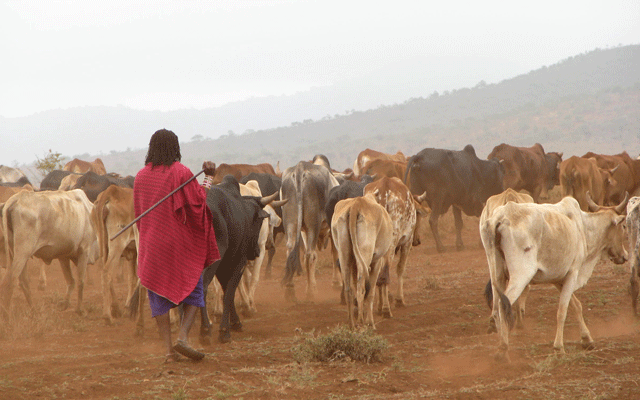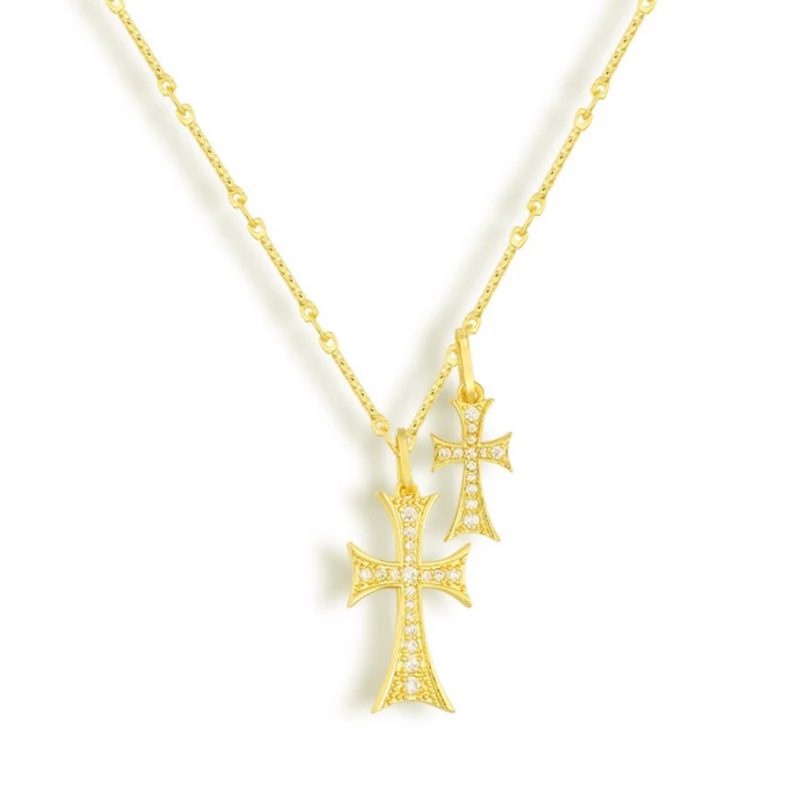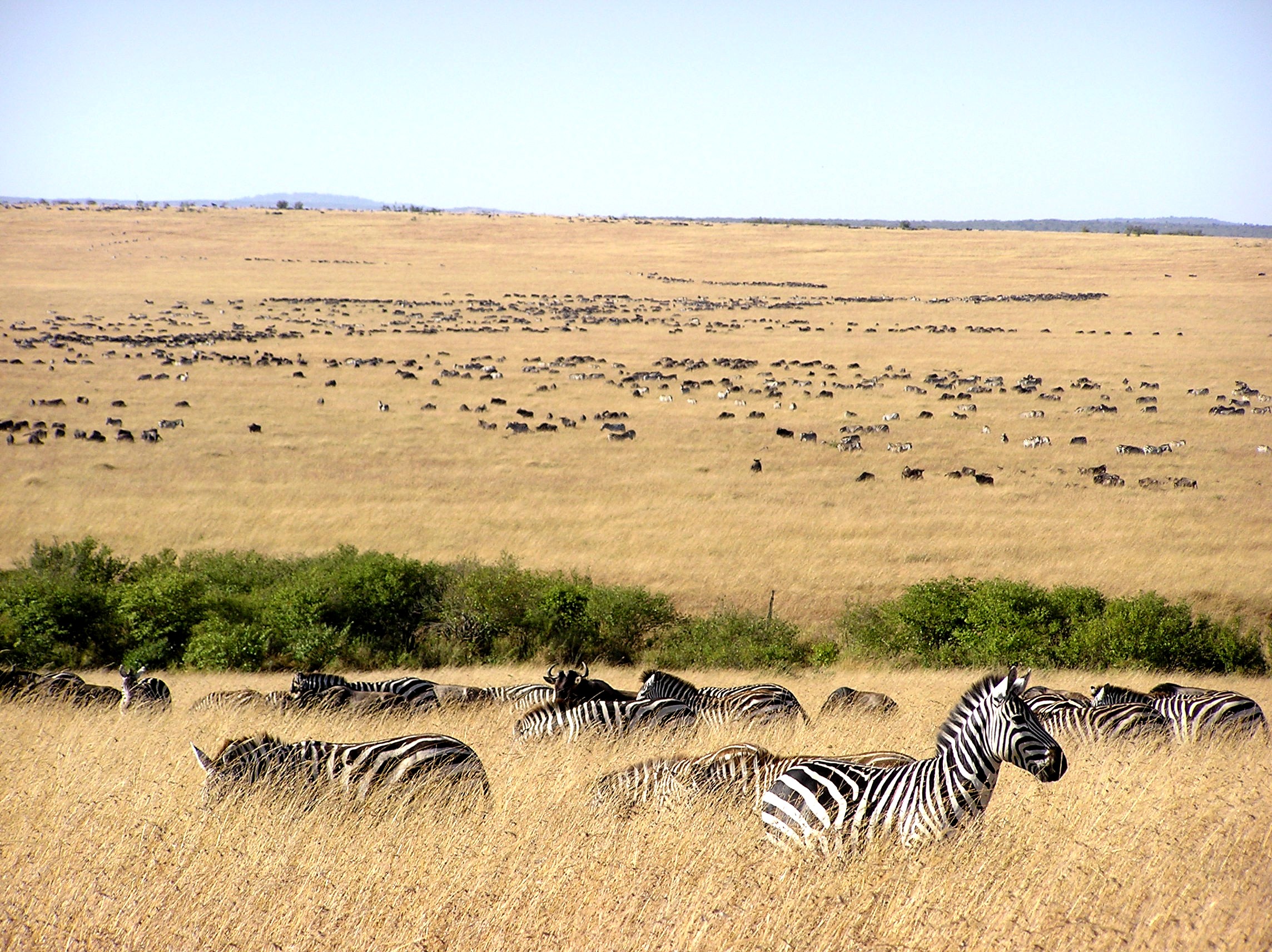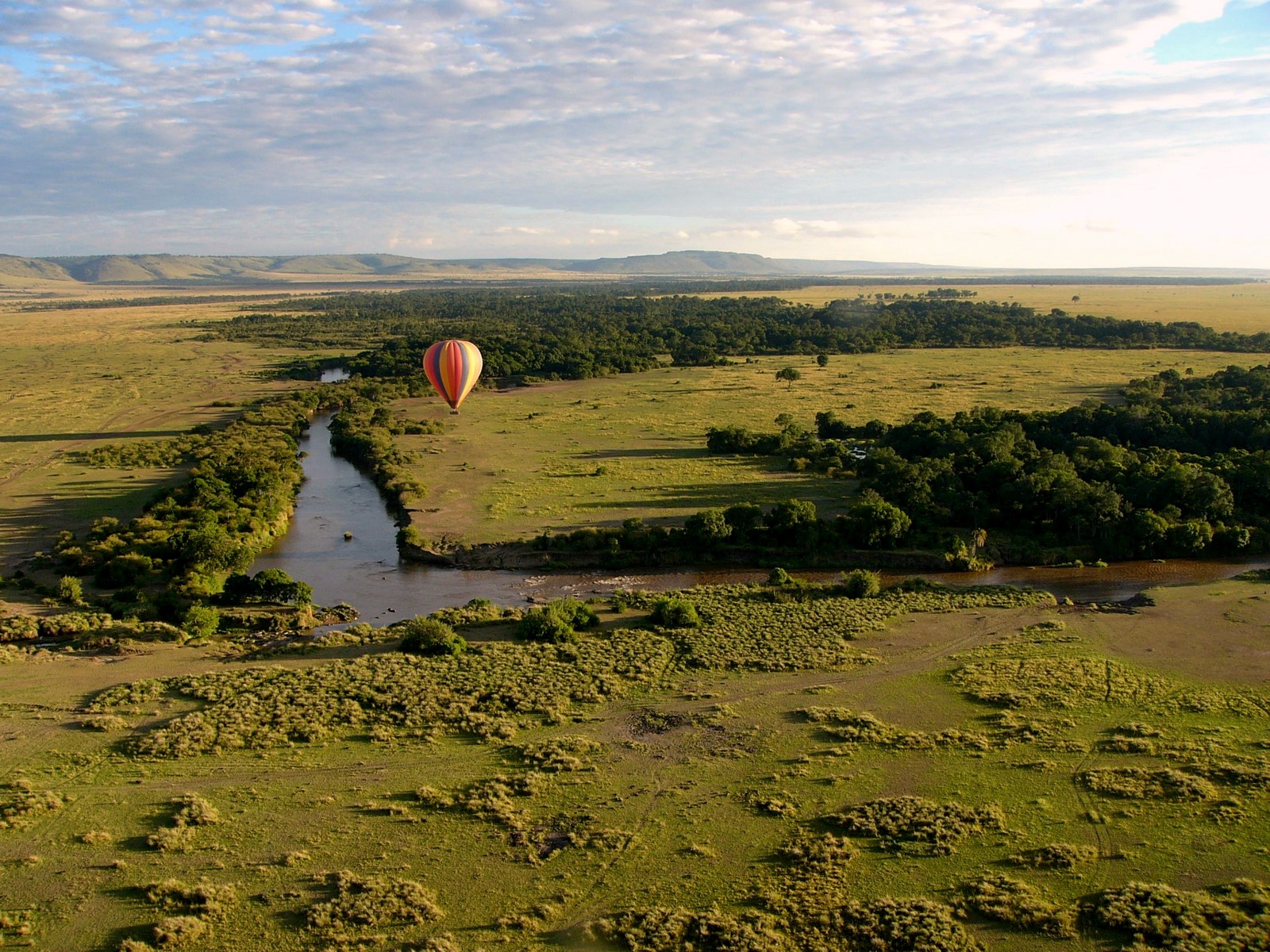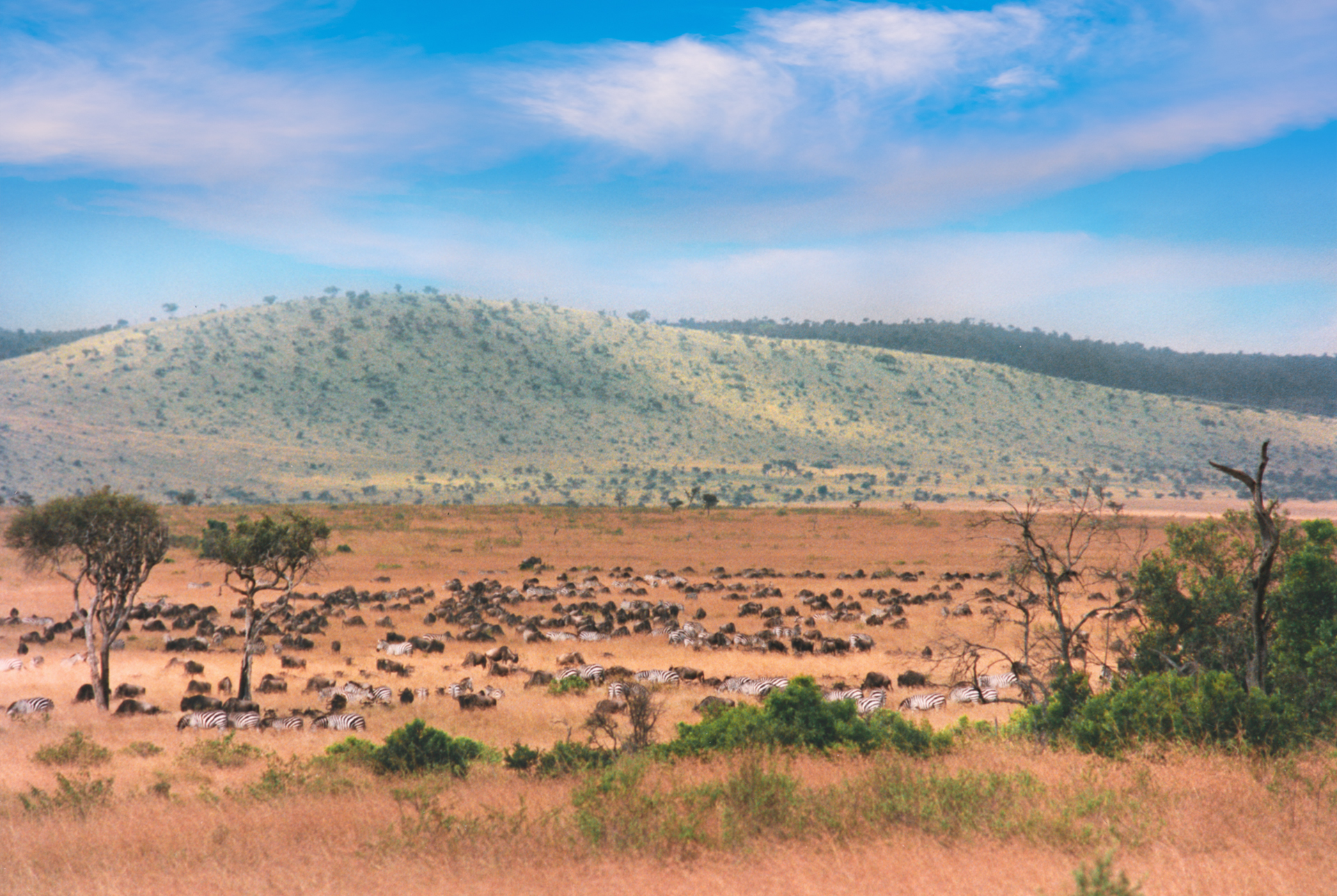Importance Of Cattle In Maasai Culture
Grazing cattle herds
Maasais are cattle-herders par excellence. They regard any pursuit other than herding as demeaning and insulting to God. For hundreds of years, they have lived sustainably through grazing their cattle. They move their herds from place to place so that grass has a chance to regrow.
Land is sacred
Maasais associate cattle with the ground. Therefore, cultivation was totally unacceptable. They would never break the ground to excavate water or bury the dead.
Significance of grass
In their rituals, Maasais place great significance to grass that grows in the land. People passing the fig tree honor it by putting grass among the roots. They also use grass for ceremonial occasions and to close gourd milk containers.
Usages of cattle
A Maasai’s entire life revolves around livestock. Cattle is everything for the Maasai: food, material, ritual, culture and much more besides. It is not only used for sustenance but has also been a central part of their survival, economy, social structure, relationships, and religion. It provides almost everything they need for their existence.
Milk as diet
Half of the cattle herd belonging to a family are dairy cows. The other half feed the calves. So, the calves get a generous amount of milk. Hence, Maasai cattle are larger and in better condition than those belonging to the surrounding tribes. Maasai family depends on the milk cows for subsistence. Fresh or curdled milk is their staple diet. They store it in long gourds washed with urine.
Blood for ceremonies
Milk is often drunk mixed with the blood of the cow. Maasais believe that the blood makes them strong. But they don’t drink it as a regular meal but consume it during special ceremonies or at special times such as births, circumcision, excision and while recovering from an accident. It may be drunk in coagulated form or tapped warm from the cow’s throat. Sometimes it is drunk with therapeutic bark soups or mixed with soured or fresh milk. They obtain salt, a necessary ingredient for the bodies, from the blood.
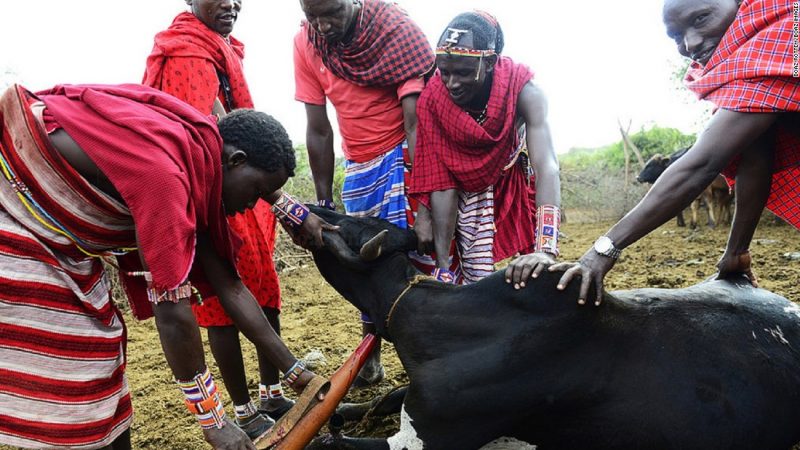
At close range, a Maasai fires a short, blunt arrow from a loosely-strung bow puncturing the vein. They then collect the blood in a gourd. Source Credit: CNN
Extracting cow blood
Maasais extract cow blood as follows: once a month, Maasais take out blood from cows pretty much like people giving blood. They make the jugular artery on the cow’s neck swell by tightening a noose around its neck. At close range, a Maasai fires a short, blunt arrow from a loosely-strung bow puncturing the vein. They then collect the blood in a gourd. They stop the bleeding with a wad of dung and mud. In recent times, consumption of blood is waning due to the reduced numbers of livestock.
Form of wealth
Maasais are one of the richest cattle-owning peoples in Kenya. In monetary terms, if they ever sold their stock they would be the wealthiest tribe. Cattle are the most important and valuable thing they own. So, they use it as a form of currency and wealth. A Maasai owns around fourteen cattle and a family around 125 to 140 of them. Fifty are considered respectable. Rich Maasais have a thousand or more. The cattle herd size indicates the status in the community. They are a highly valued source of pride and a symbol of wealth. Herd size has been a way to distinguish the poor from the rich. Hence, accumulating them, rather than consuming, is a common practice. Cattle change hands for all of their major transactions. For the Maasais, animals make life safe.
Ceremonies ritual sacrifice
Given its story of origin, cattle hold great importance in Maasai ceremonies such as births, deaths and rites passage as sacrifice offerings symbolizing people’s bond with God. Color and sex of the cattle are ritually significant. Maasais rarely slaughter the cows except for ritual purposes, in times of famine, or when the cow becomes too lame or old to be of other use. A cow is killed as an offering in transitional religious ceremonies for boys when they move up to manhood. If they slaughter a cow, with its hide they make mattresses and mats, slings, sandals, clothes and weapon sheaths; with its horns, they make containers; hooves and bones are used to make ornaments; ribs for spatulas, stirring sticks, and spoons.
Various miscellaneous purposes
Cow dung and urine are used to plaster homes. They also use dung as fuel and urine for medicinal purposes. Maasais exchange cattle between the bride’s family and groom and tradition constitute the bride price. They have been used to create or strengthen loyalties and ties and as a symbol of their bond. They are also used as fine payments to re-establish social harmony and as reconciliations over political disputes.
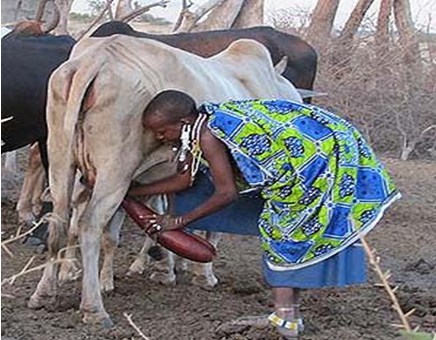
Women milk the cows while men herd and protect them from predators. Source Credit: African Business Environment
Labor
Women milk the cows while men herd and protect them from predators. Adequately supplying the cattle with water and fresh pasture requires constant attention.
Raids with neighbours
The paramount importance of cattle has also marked Maasai’s nature of relations with their neighbors. They do cattle raids for guaranteeing the prosperity of the family. They demand their rightful grazing and land rights. The aggression also massages the warrior’s ego and makes him an eligible suitor.
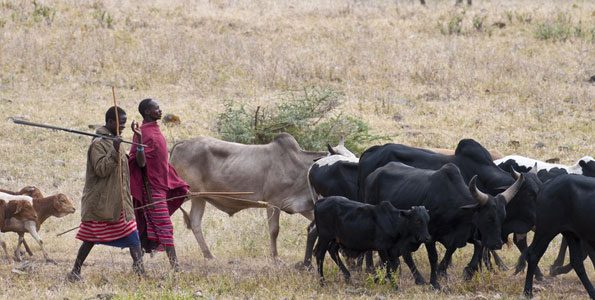
Maasais are very observant with their cattle and can recognize them by their body shape and colour. Source Credit: The East African
Mixed breed race
The Maasai cattle do not belong to one particular race. They are quite a mixed bag because of the centuries-old practice of cattle raids. As a result, their cattle are very heterogeneous having similarities with adjacent breeds of Tanzania, Nandi, and Samburu. Some admixture with other blood is noticeable, and this has influenced hump size and horn shape. Maasais are very observant with their cattle and can recognize them by their body shape and colour. They name them and can even recognize each animal’s voice. They also use cuts on the ears of the cows to identify them.
5 Frequently Asked Questions About Maasai Cattle
To book a safari in Maasai Mara, please fill out the following form or simply email us on safaris@safari-center.com

